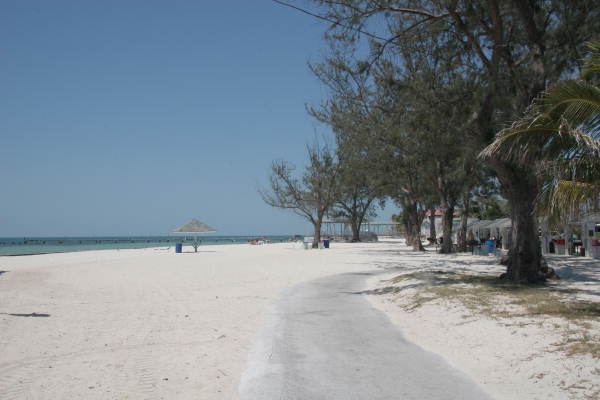Description of previous item
Description of next item
In Plain Sight: Secrets Beneath the Sands of Higgs Beach
Published July 7, 2014 by Florida Memory
Even in its most picture-perfect settings, the Florida coastline harbors many secrets about the past. At Higgs Beach in Key West, for example, visitors enjoy the sparkling blue-green waters of the Gulf of Mexico only yards away from one of the most unique cemeteries in the United States.
The cemetery, which only recently received proper investigation and recognition, originally contained the remains of nearly 300 Africans brought to Key West after they were confiscated by the U.S. Navy from ships engaging in the trans-Atlantic slave trade. Although slavery was still legal in much of the United States in 1860, the international slave trade was not. Consequently, when the American-owned vessels Wildfire, William, and Bogota sailed into the Caribbean attempting to deliver their human cargo to Cuba, they were seized, along with more than a thousand African men, women, and children.
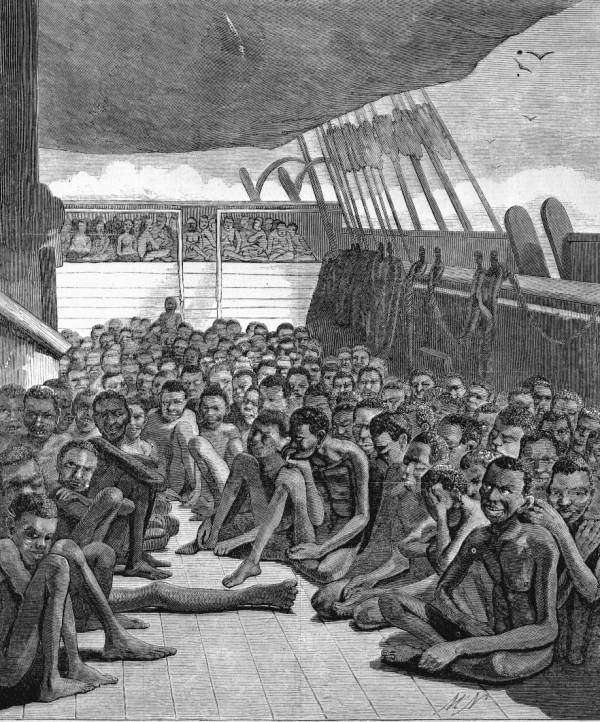
The slave deck of the bark Wildfire, one of three brought to Key West after being seized by the U.S. Navy in 1860 (Harper’s Weekly, 1860).
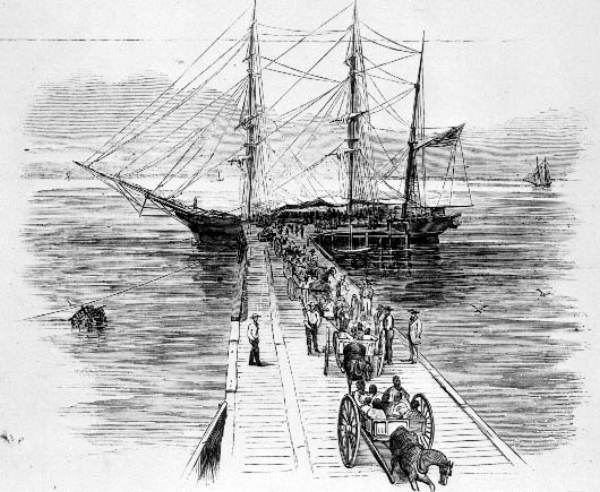
Drawing of Africans being brought from the ship Williams, one of three vessels captured by the U.S. Navy in 1860 (drawing 1860).
The African refugees arrived malnourished and weak from their long trans-Atlantic voyage, and hundreds died while awaiting their fate in Key West. As many as 14 died in a single day – many were children. Scrambling to accommodate these unexpected arrivals, the U.S. marshal at Key West, Fernando Moreno, erected housing and a hospital for the Africans. Officials called the structure a “barracoon,” borrowing terminology used by slave traders operating on the African coast. The building was divided into nine large rooms so the sexes and children of different ages could be separated.
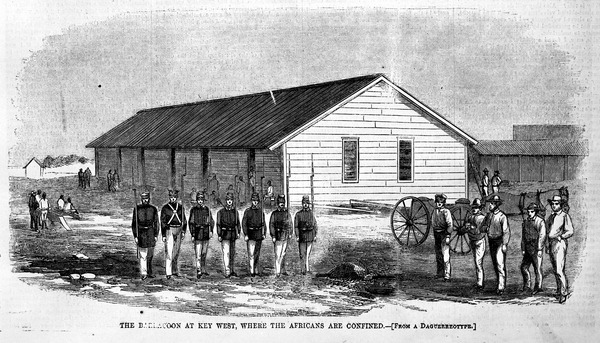
A print from Harper’s Weekly depicting the “barracoon” in which the African refugees were housed while awaiting their fate (1860).
While the Africans were at Key West, Moreno and other federal personnel guarded them vigilantly. Even with the illegality of the slave trade, these individuals were considered highly valuable in a region where slavery was still legal. Officials were concerned that someone might attempt to kidnap some of the Africans, or that they might attempt to escape. The guards mounted artillery pieces to defend against potential attacks, and deployed a police force consisting of Marines and local citizens.
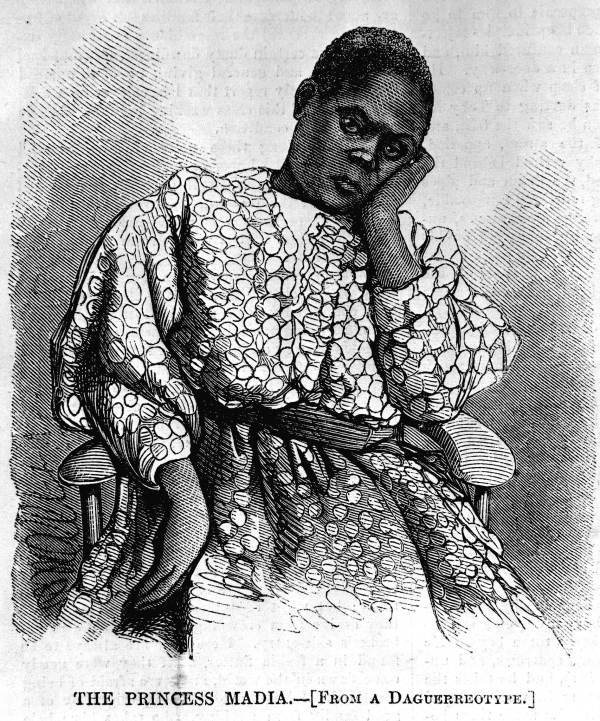
A sketch made from a daguerreotype of an African refugee at Key West in 1860. This young woman was given the title of “princess” by whites who visited the Africans, on account of her “fine personal appearance and the deference that seemed to be paid to her by some of her companions” (1860).
As Moreno and the federal agents at Key West grappled with the difficulties of maintaining such a large group of guests, the United States government investigated ways of getting the refugees back to Africa. Ultimately, the U.S. negotiated a contract with the American Colonization Society to take the Africans to Liberia, a country on the west African coast founded with support from the U.S. as a resettlement location. The first group left Key West for Africa on July 3, 1860, with another group following about two weeks later.
According to a report published in the New York Times, many of the Africans asked not to be returned to Africa, but this may have been a mistaken interpretation. It was more likely the trans-Atlantic journey itself they most feared, and with good reason. Many had died on the voyage from Africa to the Caribbean, and hundreds more would perish en route to Liberia.
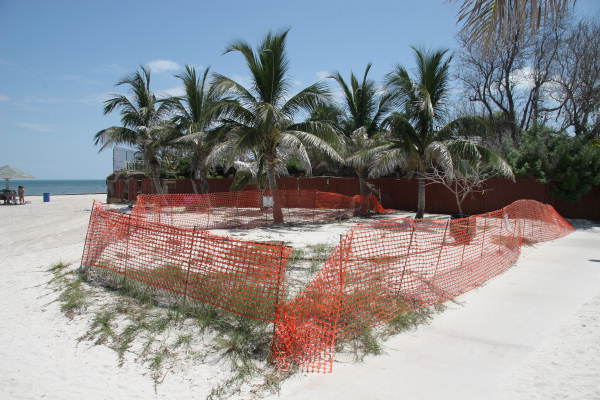
A barricade protects a section of Higgs Beach believed to be the site of the cemetery where hundreds of African refugees were buried in 1860 (photo 2006).
Not long after the last African refugee left Key West, the Civil War broke out, deflecting attention to other matters. The scores of graves at Higgs Beach were mostly forgotten, save for a few references in histories of the island. Over time, the construction of new military installations and roads in the area greatly disturbed the burials, further obscuring their story. Local researchers began a movement to properly identify and recognize the cemetery around 2000. The Florida Department of State erected a historical marker for the site in 2001, and archaeologists used ground-penetrating radar to locate at least nine distinct graves the following year. In 2012, the site was added to the National Register of Historic Places. The cemetery is particularly unique because its inhabitants were African, yet they never served as slaves, nor were they free. As researchers have explained during the course of the investigation, there are few if any sites of this kind in the Americas.
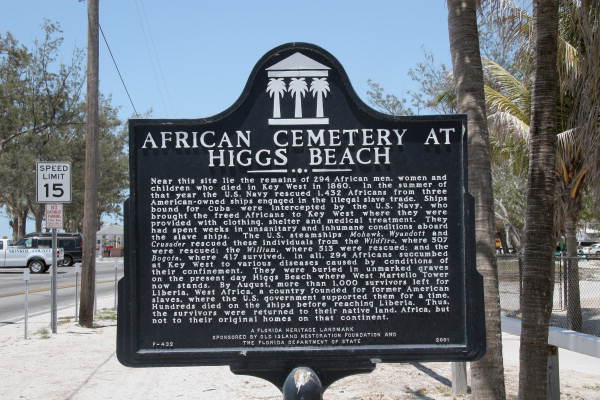
Historical marker indicating the approximate location of the African refugee cemetery in Key West (2006).
What secrets lie beneath the sands of the Florida coastline near you? Start a conversation by sharing this article of Facebook or Twitter.
Cite This Article
Chicago Manual of Style
(17th Edition)Florida Memory. "In Plain Sight: Secrets Beneath the Sands of Higgs Beach." Floridiana, 2014. https://www.floridamemory.com/items/show/295192.
MLA
(9th Edition)Florida Memory. "In Plain Sight: Secrets Beneath the Sands of Higgs Beach." Floridiana, 2014, https://www.floridamemory.com/items/show/295192. Accessed December 12, 2025.
APA
(7th Edition)Florida Memory. (2014, July 7). In Plain Sight: Secrets Beneath the Sands of Higgs Beach. Floridiana. Retrieved from https://www.floridamemory.com/items/show/295192

 Listen: The World Program
Listen: The World Program